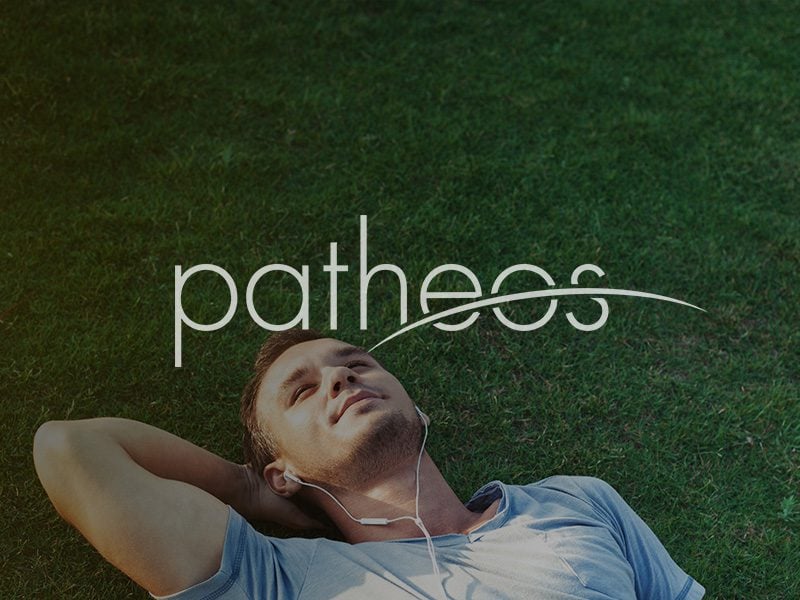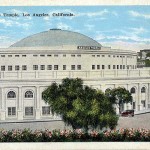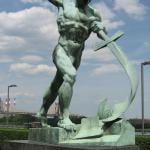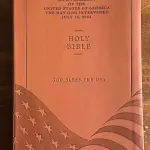As part of my farewell to Texas tour, I made a pilgrimage to the Pentecostal mecca–the largest church in the U.S., Joel Osteen’s Lakewood Church. I have visited hundreds of Pentecostal churches–as a researcher and as a worshipper, but for some reason, I was really looking forward to visiting Lakewood: For one, Joel Osteen is one of the most fascinating figures in contemporary Pentecostalism, and the multicultural make-up of Lakewood, over 20,000 strong this past Sunday, was quite striking.
Pentecostal/charismatic churches tend to be the most diverse in the U.S. and as such, I was not surprised to see a large contingent of African American and Latinos/as at Lakewood. Though, as I suspected, they are not a significant presence on Lakewood’s ministerial staff. As I walked around with my colleague, Phil Sinitiere, an expert on Joel Osteen, I made mental notes on how many Latinos/as I saw milling about. Many, with families, some looking for works by Joel and his late father John in the bookstore. One woman, a Latina in her early 30s, bought a small Spanish booklet written by John Osteen about El Baptismo en el Espiritú Santo–she said it was for her father. There was a wall full of Spanish-language materials, books, CDS, and ephemera of evangelical material culture: pillows, candles, bible covers, affirmation cards, ( I bought one of those), all in Spanish. It was impressive. As we moved into what was the former Summit, a concert area that once housed the NBA’s Houston Rockets, I made note of how many volunteers and ushers were Latino/a–reading their name tags as I sat down ready to try to take in why Joel is so popular. The usher in charge of our section struck me for many reasons.
The young man, probably in his late 20s/early 30s, had several tattoos on his hands and his neck that signaled to me that he had story to tell. Having done the bulk of my research on Latinos/as who’ve converted to Pentecostalism from various subcultures: former gang members and substance abusers–people who have very little in the way of safe havens in contemporary church life–I knew this young man had come out of something, and was now a part of the Lakewood corp of 1000s of volunteers who make running this church even feasible. He impressed me–probably because I know how difficult his transition must have been. From talking to many people like him, the sacrifice and commitment it takes to overcome the pathologies that plague the marginalized are often excruciatingly difficult. If I had time, I would have asked him a few questions, but I was here to see Joel, to try my hand at some on-the-spot, real-time analysis of what it is about him that attracts literally millions of television viewers, (7 million per week), and what has made him a global figure.
First off, a few points deserve mention–I am not interested in Joel Osteen–the theological figure–from what I have seen on television and relying on the exceptional analysis my colleague has shared with me in the form of nearly 13 years of fieldwork at Lakewood–Joel is a fairly conventional charismatic Christian–complete with tears, effusive prayers, and an altar call echoing the 4 Spiritual Laws (if you die tonight, do you know where you’d spend eternity?) I know that in many quarters of the evangelical world, there is little love for Joel, he is either a spiritual lightweight, a prosperity charlatan, or, if one were to listen to Mark Driscoll for any length of time, a little too “soft” –code for effete. I admit, I don’t know if Joel looks good in a black t-shirt and jeans, or if he watches or does MMA–so I can’t vouch for Joel’s hyper-masculine cred. No, I rarely think the full measure of analyzing Pentecostal figures or events is theological–I think there is something else to Joel–all you have to do is watch him.
Joel enters the stage after about 40 minutes of worship. He makes all 50 year olds envious because there is no way he looks it. He is well-dressed, and the trademark smile and well-coifed hair combined with a polished delivery of homespun Southern positivity make it difficult not to pay attention. Joel begins every service with a prayer, this time, according to my colleague, it was more intense, more emotional–dare I say it, more Pentecostal (c’mon Joel, let it out, you’re not fooling anyone). The tenor of the prayer was serious, the theme was mortality–loss–it was not about anyone’s best life now–but the end of life. Anyone in that stadium who’s experienced being swept up by a spiritual force, going off script, and welling up over loss–perhaps over failure–knows that feeling–I felt your pain Joel & I was surprised you let your Pentecostal hair down–even if for a brief moment. The rest of the service, and yes, his message–was not remarkable. It was some variant on a theme Joel has expressed for years–positive thinking and remaining faithful will create a situation where God will fulfill all of your expressed and unexpressed desires.
I am not convinced that having everything you want, desire, need, or wish, is something that is possible in the best of circumstances–and if I may wax theologically—I am not convinced that its even the goal of this life–but I digress. Why do people like Joel? Why do Latinos/as really seem to like him? What is it about him? Let me take a guess–Joel offers a “soft” prosperity wrapped in the genteel therapeutic remnants his father’s zealous Pentecostalism. Let’s be real, having a nice-looking guy tell you that everything is going to be okay is not the worse thing than can happen to you. He genuinely seems happy, content, and sees his mission as preaching a beatific vision of joy—but not simply an ethereal vision–but a temporal vision where you win–all the time. For people whose collective historical experiences in the evangelical/Pentecostal church has been marked largely by division, de facto segregation, and disempowerment–Joel seems like a guy who’d never think of uttering a negative or hurtful word–and by extension–seems to offer the inclusive warm hospitable environment many African Americans and Latinos/as have been looking for for decades.
My colleague and I are both writing about Joel Osteen, he is writing a full-fledged biography, while I am writing a few pages for my next project, Pentecostalism in America (Columbia University Press, coming out–eventually). In my few pages, I am looking at Joel as the “end of Pentecostalism” as we know it–he’s effectively burnished off the hard edges, he’s elevated it beyond its legalistic tendencies, and continued its unmooring from its emphasis on a hierarchy of spiritual gifts–Joel is the perfect 21st century bookend to Pentecostalism’s century as a global phenomenon. So, Mark Driscoll, and a host of other evangelicals don’t like him–I am willing to say that such negativity doesn’t wipe the smile off Joel’s face–and neither does it seem to deter the millions of people who find spiritual solace at Lakewood.












